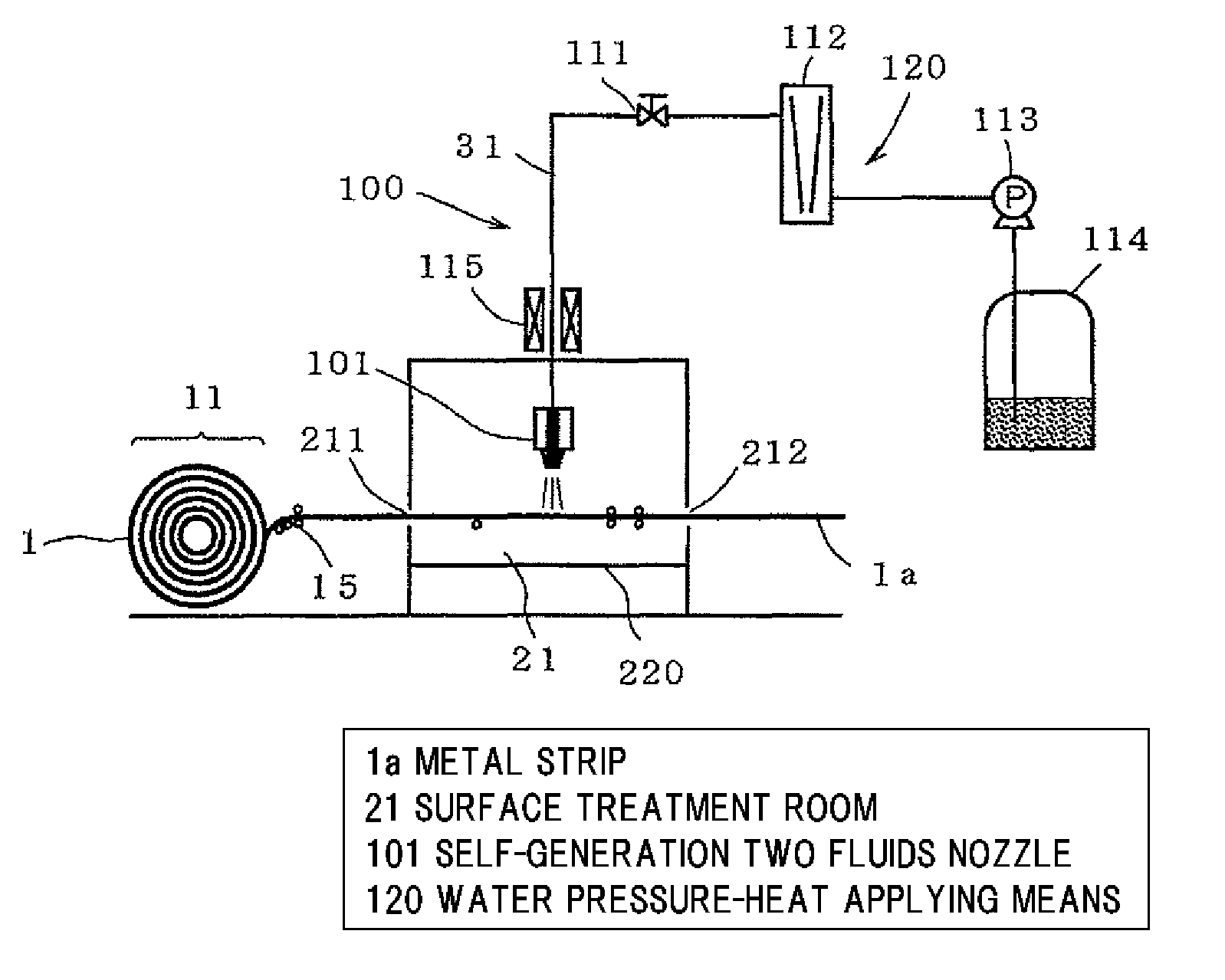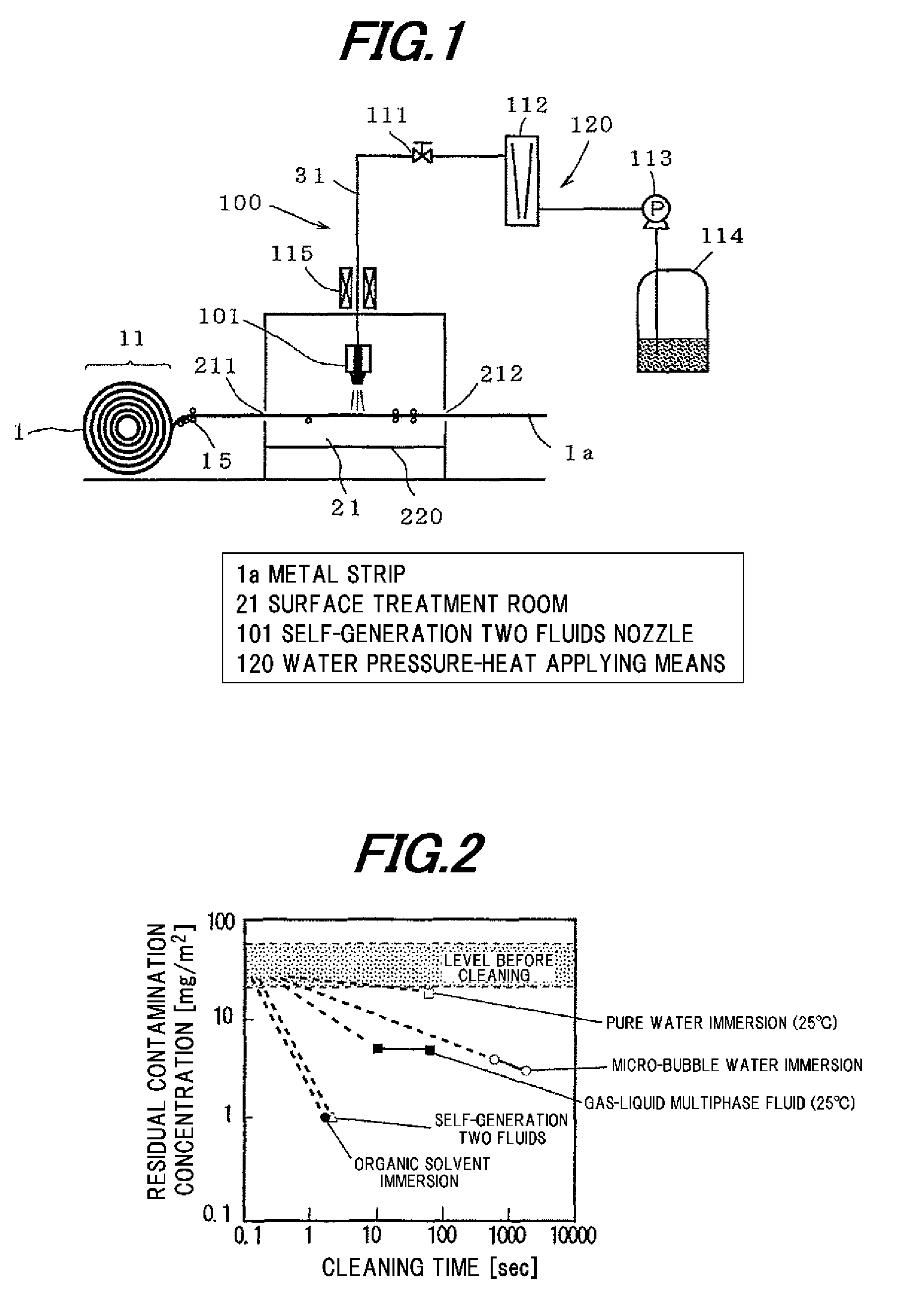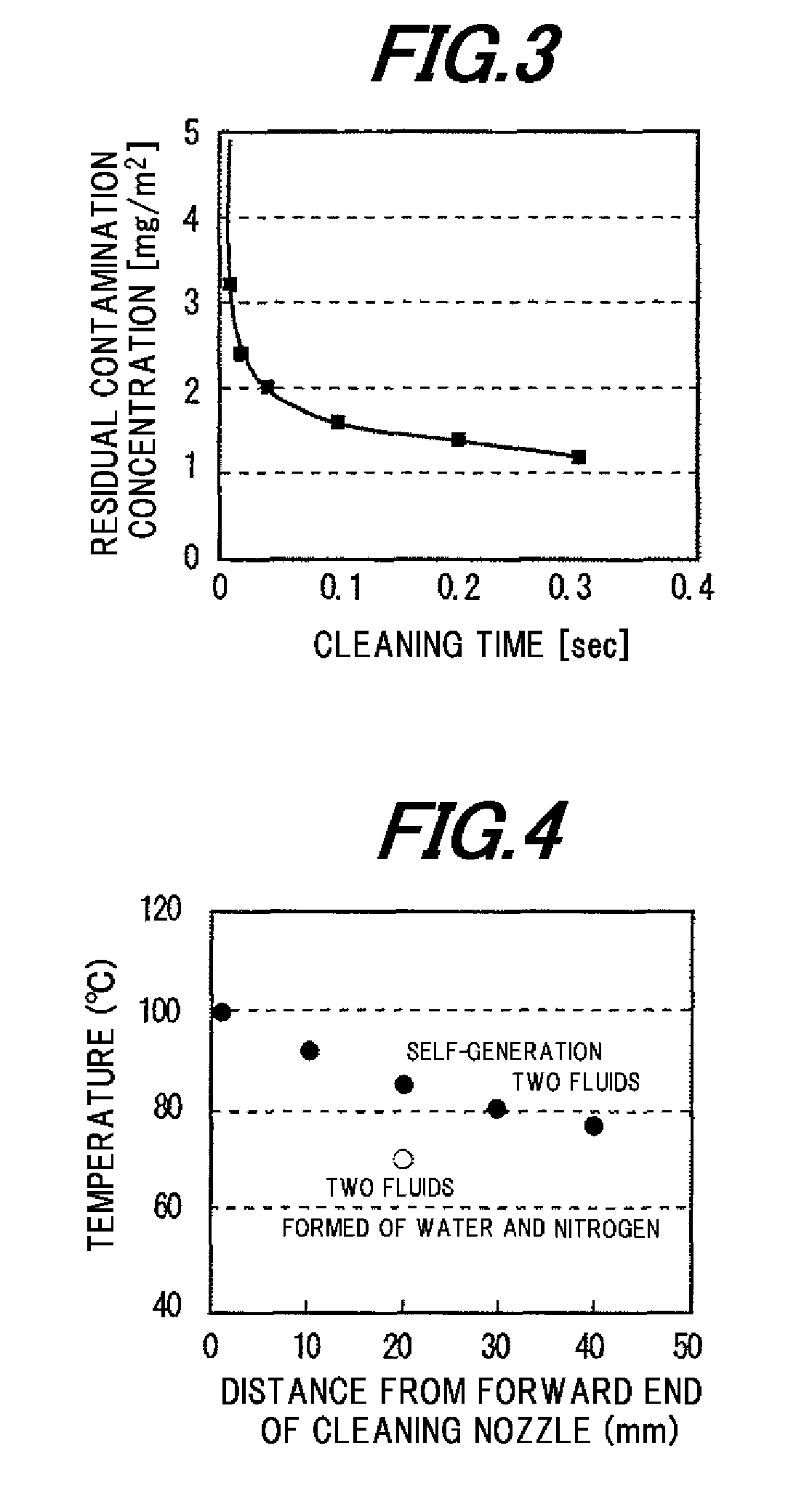Surface treatment method of metal member and cleaning nozzle
- Summary
- Abstract
- Description
- Claims
- Application Information
AI Technical Summary
Benefits of technology
Problems solved by technology
Method used
Image
Examples
example 1
[0133]In FIG. 1, a copper strip after completion of a rolling process was used as the metal strip and a tank in which pure water is filled was used as the water tank, and removal of a rolling process lubricating oil on the surface of the copper strip was carried out.
[0134]The copper strip fed from the uncoiler 11 was introduced into the surface treatment room 21 from the inlet 211, after a cleaning treatment was applied thereto for a predetermined time, and was extracted from the outlet 212 to the outside of the surface treatment room 21. Water was fed from the water tank 114 while pressured by the pump 113 and reached the nozzle 101 via the flow meter 112 and the flow control valve 111. Heating was carried out by the heater 115 installed along the way of the piping 31.
[0135]As the self-generation two fluids nozzle 101 for discharging the self-generation two fluids, a nozzle manufactured by Spraying Systems Co., model number: HB-1 / 4-VV-SS-80-0050 was used. The spray angle was 80 deg...
example 2
[0140]A cleaning was carried out in a shorter time by using the same spray nozzle as Example 1. The cleaning was carried out on the condition that a spray pattern located at a distance of 20 mm from the nozzle was a rectangular shape of 10×30 mm, and a width direction of the copper strip was corresponded to a long side of the spray pattern. The linear speed of the copper strip was set to 60 m / min. At this time, a time when the copper strip passes under the one spray is 0.01 second. A desired cleaning time was obtained by 1 to 30 nozzle(s) was (were) arranged in the surface treatment room 21, the linear speed was set to a constant value and the number of the nozzle was changed.
[0141]FIG. 3 shows a result from that the cleaning was carried out by using a copper strip having an oil concentration of almost 100 mg / m2, and the residual contamination concentration after cleaning was measured. It was confirmed that the copper strip of Example 2 became clean even if in a shorter time than Ex...
example 3
[0145]A generation of the self-generation two fluids and a cleaning treatment were carried out by using the surface treatment device explained in FIG. 5.
[0146]Namely, the surface treatment device shown in FIG. 5 is similar to the surface treatment device shown in FIG. 1, but a liquid is fed under pressure by a gas pressurizing instead of using a pump. In addition, heaters are installed in both locations along the way of the piping and at the water tank.
[0147]Here, the self-generation two fluids were generated by two systems respectively.
[0148]In a system A as one system, a temperature was constantly retained to 105 degrees C., and a pressure was adjusted by a pressure of the gas used for the feeding under pressure. Since a vapor pressure of water at the temperature is 0.15 MPa, in case that a pressure equal or higher than the pressure was needed, pressurizing due to introducing a gas was carried out.
[0149]In a system B as another system, heating was carried out so that the vapor pre...
PUM
| Property | Measurement | Unit |
|---|---|---|
| Pressure | aaaaa | aaaaa |
| Angle | aaaaa | aaaaa |
| Angle | aaaaa | aaaaa |
Abstract
Description
Claims
Application Information
 Login to View More
Login to View More - R&D
- Intellectual Property
- Life Sciences
- Materials
- Tech Scout
- Unparalleled Data Quality
- Higher Quality Content
- 60% Fewer Hallucinations
Browse by: Latest US Patents, China's latest patents, Technical Efficacy Thesaurus, Application Domain, Technology Topic, Popular Technical Reports.
© 2025 PatSnap. All rights reserved.Legal|Privacy policy|Modern Slavery Act Transparency Statement|Sitemap|About US| Contact US: help@patsnap.com



